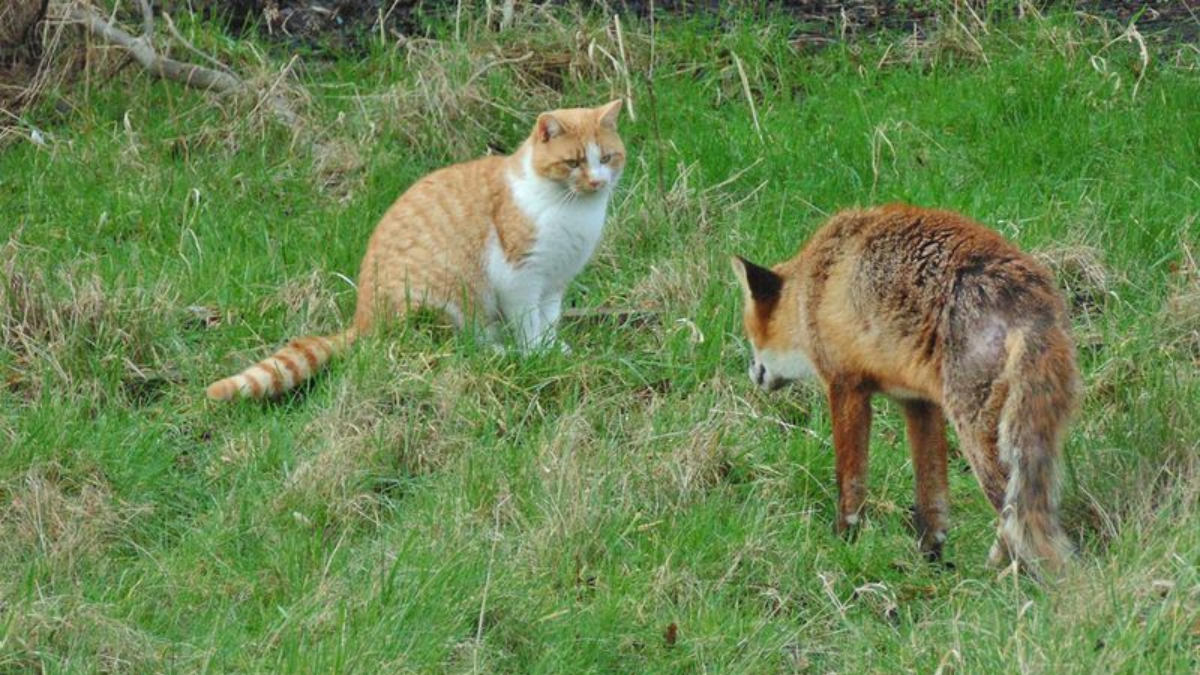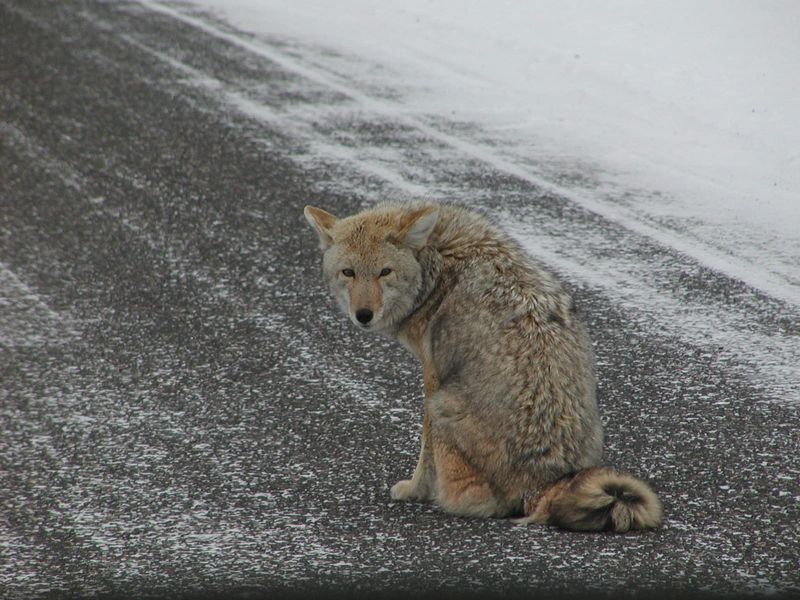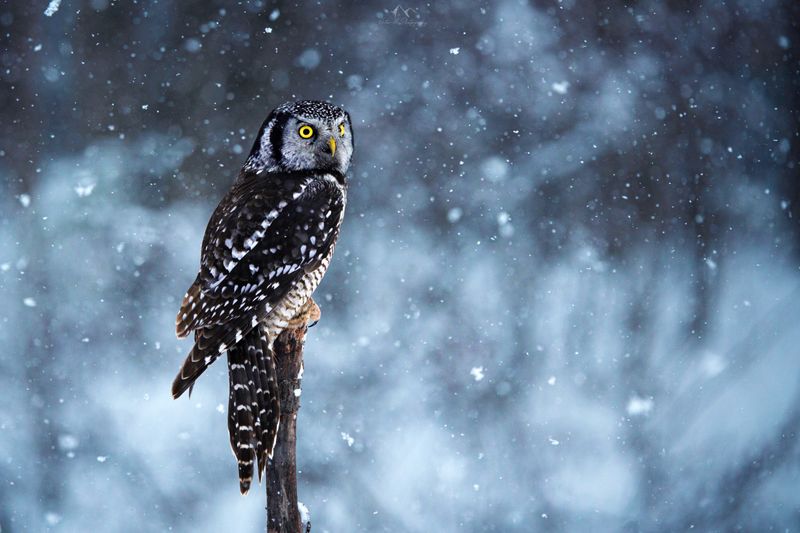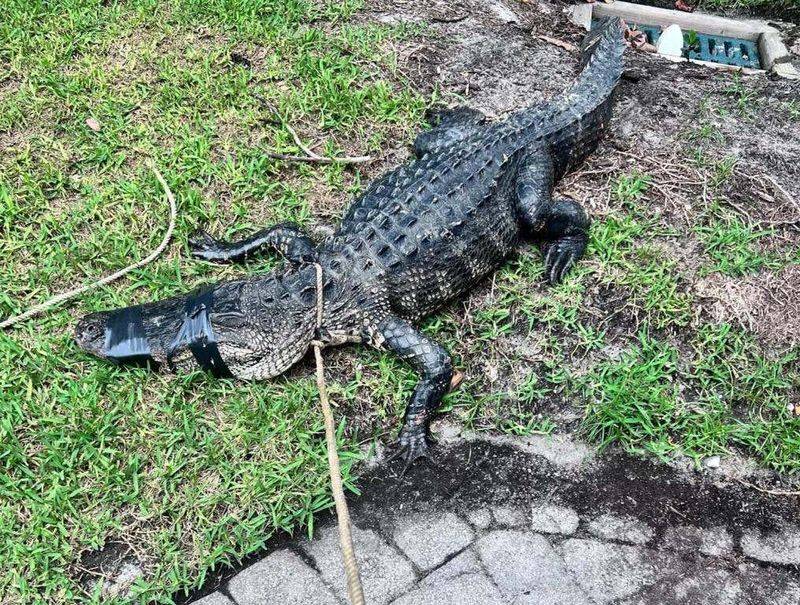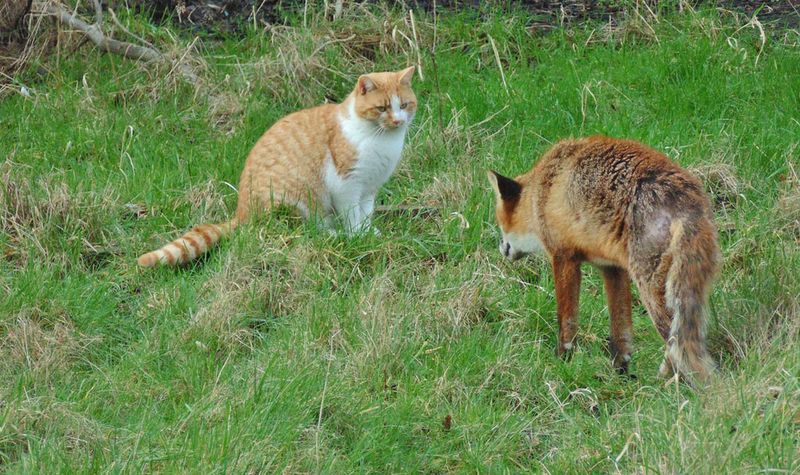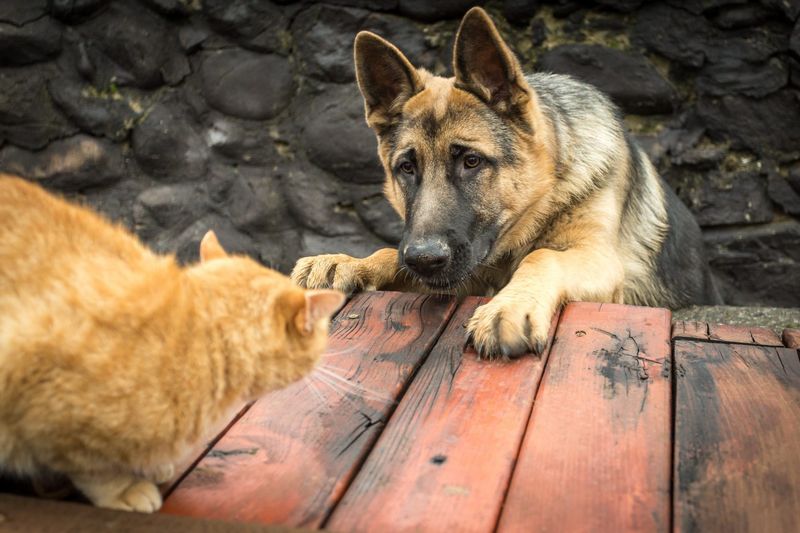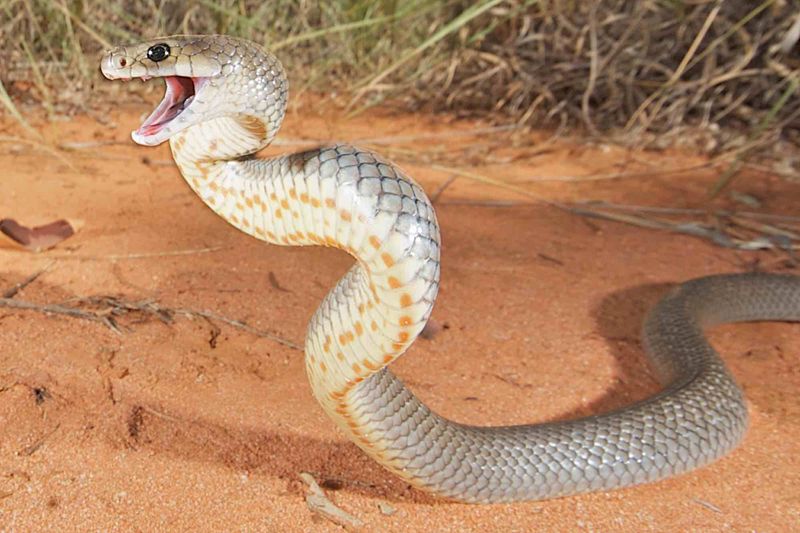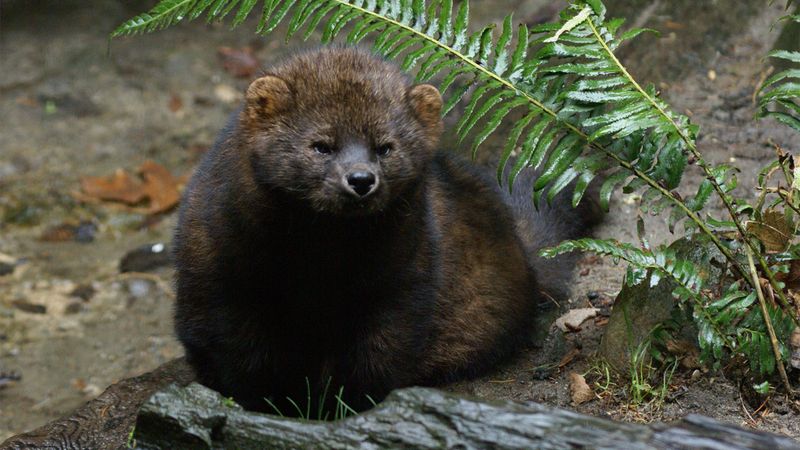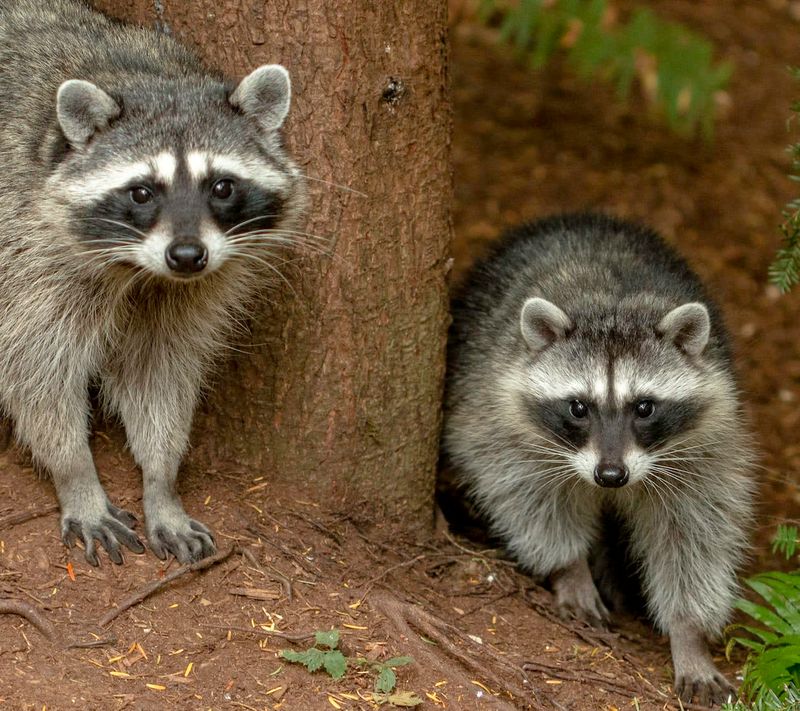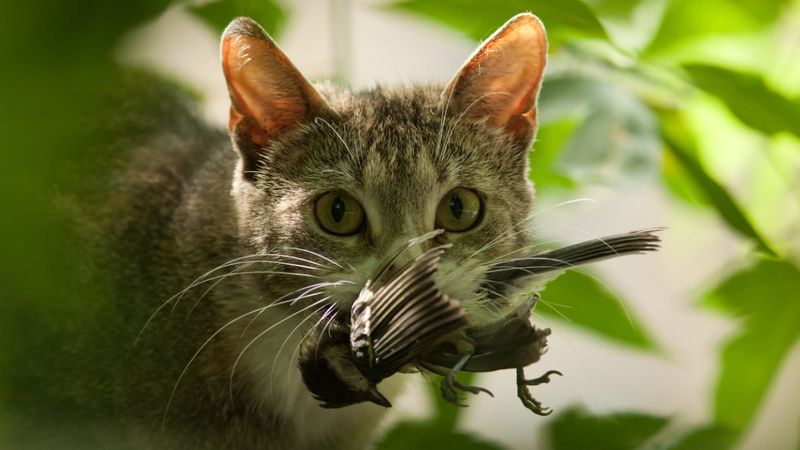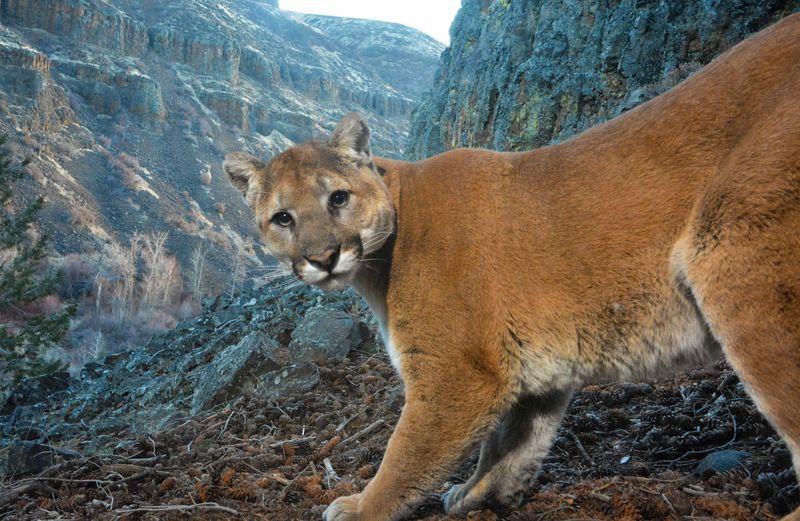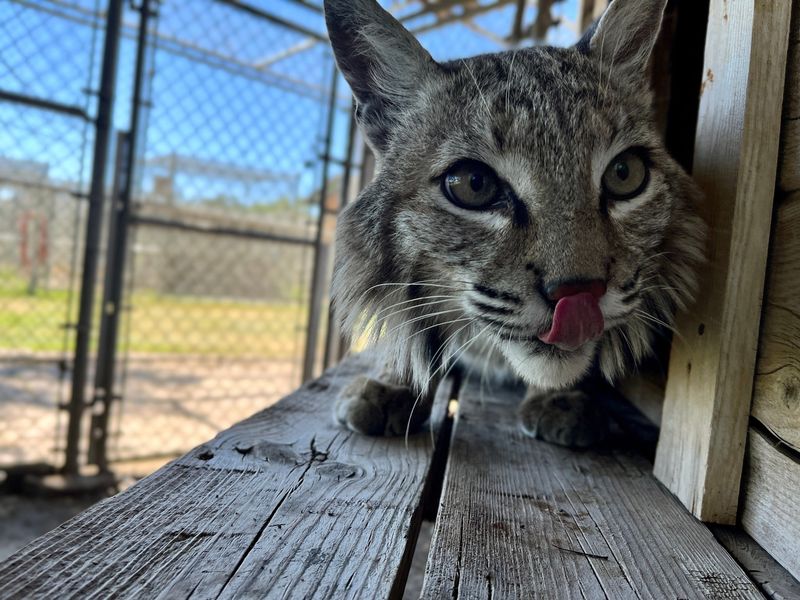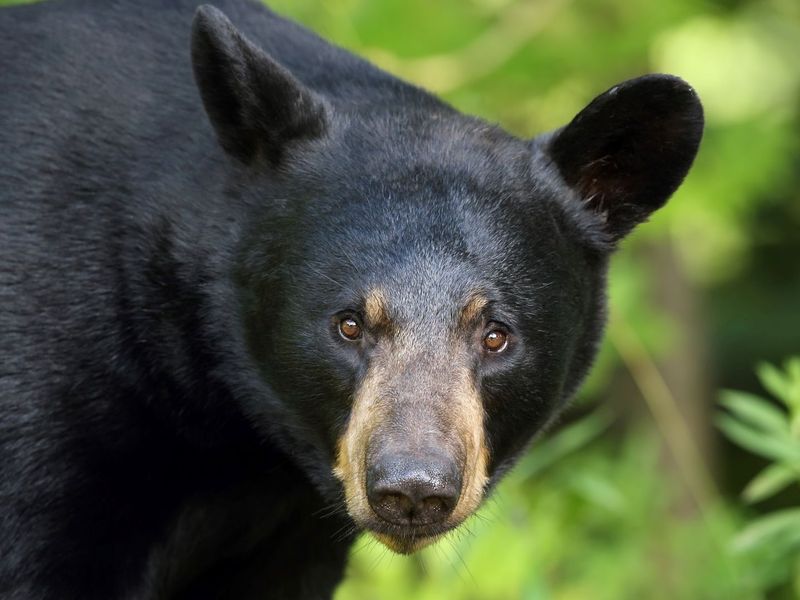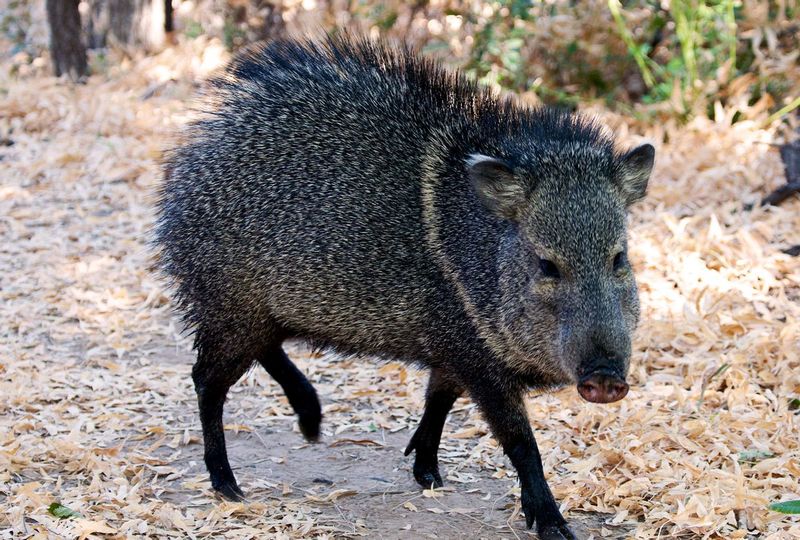📖 Table of Content:
Cats often appear self-assured and independent, yet they face real dangers in the wild and at home. Various animals, from larger predators to smaller rivals, can threaten their safety. Understanding these potential threats helps ensure a safer environment for feline companions.
Outdoor roaming increases the risks cats encounter, exposing them to predators and territorial conflicts. Even indoor cats can be affected indirectly by animals that pose risks in their surroundings. Awareness of these threats is crucial for protecting cats from harm.
Some animals naturally compete with cats for resources or territory, creating tension and potential danger. Identifying which creatures could cause problems allows for better precautions. Protecting cats from these risks contributes to their health and well-being.
1. Coyotes
In recent years, coyotes have expanded into urban and suburban areas, creating dangers for cats allowed outdoors. These adaptable predators consider cats as food and will attack if the chance arises. They are most active during dawn and dusk, matching the hours many cats spend outside exploring.
Their speed and hunting skills make escaping nearly impossible for domestic cats. A single coyote can easily overpower a cat, but they often hunt in small family groups, making them even more dangerous. Cat owners in coyote territory should keep pets indoors, especially during early morning and evening hours.
2. Birds of Prey
Hawks, eagles, and owls possess incredible hunting abilities that make them formidable cat predators. Large raptors can swoop down silently and grab cats weighing up to 15 pounds, carrying them away with powerful talons. Great horned owls are particularly dangerous night hunters.
Their silent flight and excellent vision allow them to spot cats in near darkness. Hawks typically hunt during daylight hours, making outdoor cats vulnerable throughout the day. These birds don’t recognize the difference between a pet cat and natural prey. Small kittens and elderly cats face the highest risk from aerial attacks, as they lack the speed and strength to escape.
3. Alligators
In regions like Florida, Louisiana, and Texas, alligators pose a real threat to outdoor cats. These stealthy hunters lurk by water sources and can strike with astonishing speed, pulling prey beneath the surface. Those living near bodies of water in alligator country must take extra precautions to protect their cats.
During mating season and when protecting their young, alligators become more aggressive and may venture further from water. The risk increases during dawn and dusk when alligators are most active and cats might be exploring.
4. Foxes
Living comfortably in cities, foxes often come into contact with pet cats. Healthy adult cats usually hold their own, but kittens and elderly cats can fall prey to these crafty animals. Red and gray foxes are common throughout both North America and Europe.
They’re primarily nocturnal hunters, giving them an advantage when cats are less alert or sleeping outdoors at night. Competition for territory and food sources can lead to aggressive encounters. Foxes carry diseases transmissible to cats, including rabies and mange, making even non-fatal interactions potentially dangerous for your pet’s health.
5. Large Dogs
Dogs with strong prey drives present one of the most common threats to outdoor cats. Breeds like huskies, greyhounds, and terriers were specifically developed to chase and capture small animals, making them instinctively dangerous to cats they don’t know. Even well-trained dogs can revert to predatory behavior when encountering an unfamiliar cat outside their home territory.
The speed advantage of many dog breeds means cats often can’t outrun them in open spaces. Loose or stray dogs pose particular risks since they lack supervision. Responsible dog ownership includes proper containment and leashing, but cat owners should remain aware that not all dog owners follow these practices.
6. Snakes
Curious cats face serious risks from venomous snakes like rattlesnakes, copperheads, and cottonmouths found in North America. When cats disturb or investigate these snakes, they risk receiving potentially deadly bites. Their instinct to chase and paw at moving prey makes them especially vulnerable.
Snake venom affects cats quickly due to their smaller body mass, and treatment requires immediate veterinary care. Non-venomous constrictors like pythons and boas can also pose dangers, especially to kittens and smaller cats. These snakes have been known to prey on cats in regions where large constrictors have established wild populations, such as southern Florida.
7. Fisher Cats
Though called fisher cats, these animals belong to the weasel family and live in forests across North America. Their range has expanded into suburban areas, bringing them into contact with pets that roam outside. Weighing between 8 and 13 pounds, fishers are skilled predators capable of taking down prey larger than their own size.
Their speed, climbing skills, and powerful jaws make them formidable opponents for domestic cats. Fisher cats are primarily nocturnal and crepuscular hunters, increasing the risk to cats that roam at night. Their presence is often first noticed when pets disappear, as fishers typically drag prey away to consume it elsewhere.
8. Raccoons
Raccoons may seem like comical masked bandits, but they pose legitimate threats to cats. These highly adaptable mammals have thrived in urban environments and frequently clash with outdoor pets over territory and food resources. Adult raccoons typically outweigh most cats and possess surprising strength and dexterity.
Their sharp claws and teeth can inflict serious injuries during confrontations. Raccoons also carry diseases like rabies and roundworm that can be transmitted to cats. Food is often the catalyst for raccoon-cat conflicts. Outdoor pet food, garbage, or natural food sources can attract raccoons to areas where cats live, leading to territorial disputes that cats rarely win.
9. Wolves
In rural regions where wolves have made a comeback, cats face a significant threat. These apex hunters treat cats as just another food source and will pursue them opportunistically. Wolves cover vast areas while hunting, increasing the chances of encounters near farms and country homes.
Individual wolves typically weigh 70-150 pounds, completely outmatching even the largest domestic cats. Wolf-cat encounters almost always end badly for the cat. Unlike with some predators, cats have virtually no defense mechanisms against wolves. Cat owners in wolf country should keep pets indoors or in secure outdoor enclosures, especially during evening and early morning hours.
10. Mountain Lions
Mountain lions (also called cougars or pumas) present a serious danger to cats in western North America. These powerful predators can weigh up to 200 pounds and easily overpower any domestic cat. Suburban development into cougar habitat has increased encounters between these big cats and pets. Mountain lions are ambush predators that strike quickly, giving cats little chance to escape.
They typically hunt at dawn, dusk, and night when cats might be outside. Even in areas where cougar sightings seem rare, these stealthy cats may be present without detection. Pet disappearances are often the first sign of mountain lion activity in an area, as they typically carry prey away to consume it privately.
11. Bobcats
Widespread across North America, bobcats view domestic cats as competition and prey alike. With a weight range of 15 to 35 pounds, they are much larger than most house cats. These territorial wild cats will aggressively defend their hunting grounds by attacking intruding cats.
Their superior strength, speed, and hunting skills make domestic cats easy targets. Bobcats are increasingly comfortable in suburban environments where natural habitat borders residential areas. Unlike some predators that hunt only for food, bobcats may kill cats as territorial competitors even when not hungry. Their excellent camouflage and stealth make them difficult for cats to detect until it’s too late.
12. Bears
Across North America, bears pose risks to cats in rural and suburban areas. Black and grizzly bears, being opportunistic feeders, will prey on small animals such as cats when the chance arises. Cats are not the intended target, but confrontations with bears tend to be dangerous for them.
A bear’s massive size advantage and powerful claws make quick work of any cat unfortunate enough to cross paths with one. Trash, pet food, and bird feeders attract bears into residential areas, increasing the risk of dangerous encounters. Cat owners in bear country should keep pets indoors, especially during spring when hungry bears emerge from hibernation and during fall when they’re actively foraging before winter.
13. Crows and Ravens
Corvids like crows and ravens don’t typically prey on adult cats but pose surprising threats to kittens and elderly felines. These highly intelligent birds work cooperatively and have been documented attacking vulnerable cats. Their mobbing behavior involves groups of birds diving at and harassing a target. While a single crow poses little danger, a murder of crows can seriously injure small kittens with repeated strikes from sharp beaks.
Crows hold grudges and recognize faces, including those of cats that have threatened them previously. If your cat has harassed crows in the past, the birds may organize targeted attacks as revenge, making these common birds unexpected adversaries to outdoor cats.
14. Javelinas
Javelinas (collared peccaries) create problems for cats in southwestern states like Arizona, Texas, and New Mexico. These pig-like mammals travel in herds and react aggressively to cats, which they perceive as threats to their young. Despite their poor eyesight, javelinas have excellent smell and hearing. They can detect cats at considerable distances and will charge to drive them away.
Their sharp tusks and substantial weight (60-90 pounds) make them dangerous opponents for any cat. Javelinas routinely visit residential areas in search of water and food, especially during drought conditions. Cat owners in javelina territory should keep pets indoors or create secure outdoor enclosures that prevent contact with these territorial wild animals.
15. Feral Hogs
Across large parts of the U.S., feral hogs have emerged as a threat to outdoor pets. These once-domesticated pigs have turned wild, with some males reaching weights over 200 pounds. Known for their aggression and territorial instincts, they may attack cats that get too close.
They travel in groups called sounders, multiplying the danger. Their powerful jaws and tusks can inflict devastating injuries. Rural and suburban areas with nearby woods or fields may harbor these destructive animals. Cat owners should be particularly cautious if they notice rooted-up soil, tracks, or other signs of hog activity near their property.
